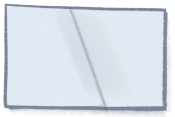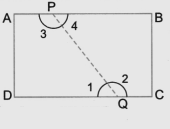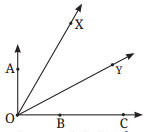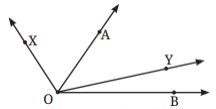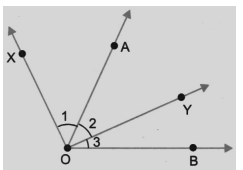Lines And Angles Class 6 Questions and Answers - Free PDF Download
FAQs on NCERT Solutions For Class 6 Maths Chapter 2 Lines And Angles Exercise 2.6 - 2025-26
1. What is the main focus of NCERT Solutions for Class 6 Chapter 2, Exercise 2.6?
The main focus is on comparing angles by measuring and understanding different types of angles such as acute, obtuse, and right angles.
2. How does Exercise 2.6 in Class 6 Maths Chapter 2 help students?
Exercise 2.6 helps students understand how to measure angles accurately using a protractor and compare angles based on their sizes.
3. What tools are needed to complete Class 6 Chapter 2, Exercise 2.6?
Students need a protractor to measure angles and complete the exercises in Chapter 2, Exercise 2.6.
4. What are the types of angles students will learn in Class 6 Maths Chapter 2, Exercise 2.6?
Students will learn to identify acute, obtuse, and right angles in Exercise 2.6.
5. How do the NCERT Solutions for Class 6 Chapter 2, Exercise 2.6 help with angle comparison?
The solutions provide a step-by-step explanation, making it easier to compare angles based on their measurements.
6. Why is it important to practise NCERT Solutions for Class 6 Maths Chapter 2, Exercise 2.6?
Practising these solutions helps students gain confidence in comparing angles and improves their understanding of basic geometry.
7. Can Exercise 2.6 from Class 6 Chapter 2 help with real-life situations?
Yes, understanding angles is important in real-life scenarios like construction, designing, and even sports.
8. What type of problems are solved in Class 6 Chapter 2, Exercise 2.6?
Students solve problems related to measuring and comparing angles using a protractor in Exercise 2.6.
9. How does Exercise 2.6 in Class 6 Chapter 2 develop geometry skills?
It builds foundational skills in geometry by teaching students how to measure and compare angles accurately.
10. Are the NCERT Solutions for Class 6 Maths Chapter 2, Exercise 2.6 by Vedantu easy to understand?
Yes, the solutions provided by Vedantu are explained in simple steps to ensure that students can easily understand the concepts of comparing angles.
11. How does Class 6 Maths Chapter 2, Exercise 2.6 prepare students for exams?
By practising these exercises, students strengthen their angle comparison skills, which are essential for geometry-related questions in exams.
12. What benefits do students get from Vedantu’s NCERT Solutions for Class 6 Chapter 2, Exercise 2.6?
Vedantu’s solutions provide clear guidance, step-by-step problem-solving, and help students build confidence in comparing angles.

























